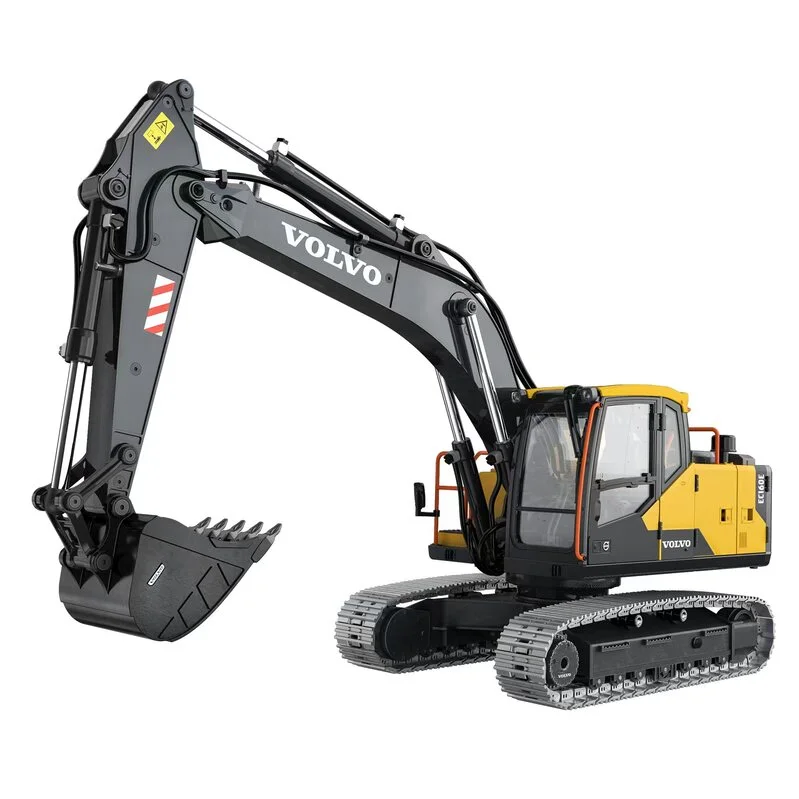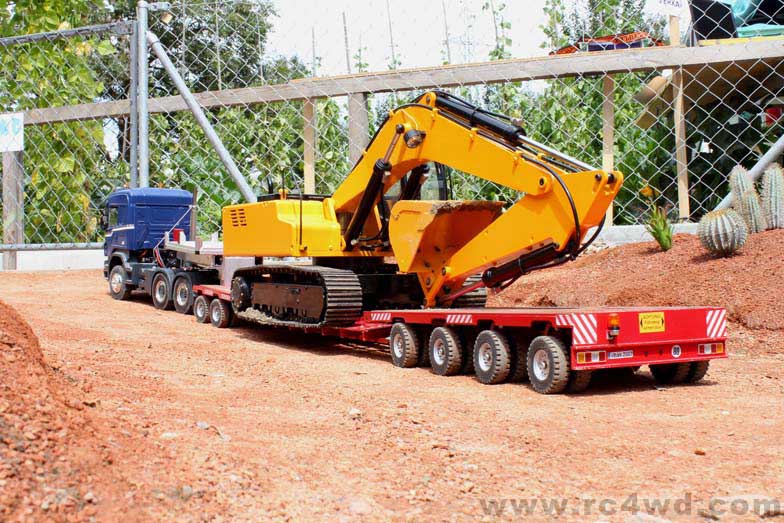The Essential Attributes of Excavator That Make It a Must-Have Tool
Excavators are essential in the building and construction and landscaping markets. Their flexible attachments permit a variety of tasks, from excavating to demolition. Furthermore, they boast remarkable digging deepness and reach, powered by robust engines. Driver convenience and compact designs enhance functionality in numerous environments. Nonetheless, what genuinely establishes excavators apart are their innovative hydraulic systems and toughness. Understanding these functions can clarify why they are taken into consideration crucial tools on any kind of task site.
Functional Accessories for Improved Functionality
Although excavators are effective devices by themselves, the enhancement of flexible attachments significantly enhances their performance. These accessories transform a typical excavator into a multi-purpose device, suitable for a selection of tasks. Pails, for instance, can be found in different sizes and shapes, allowing operators to dig, scoop, and relocate products effectively. Hydraulic thumbs can be added for enhanced gripping and handling of large items, such as logs or rocks.Furthermore, specialized attachments like breakers and augers permit for boring and demolition work, increasing the excavator's utility on construction websites. remote control excavator. Grapples are another alternative, ideal for sorting and moving particles. This adaptability not just increases efficiency yet additionally lowers the need for several devices, conserving time and prices. By gearing up excavators with the best accessories, operators can tackle diverse projects, making them vital in the construction market
Superior Digging Depth and Get To
Excavators are created with exceptional excavating depth and reach, allowing them to steer in limited areas and accessibility hard-to-reach areas. This ability is essential for various building and excavation projects, where typical machinery may fail. With flexible boom arms and extendable tracks, excavators can quickly navigate unequal surface while maintaining stability.The excavating depth can vary considerably amongst designs, usually ranging from 10 to 25 feet, depending upon the style and purpose. This function allows operators to excavate structures, trenches, and various other deep structures successfully. In addition, the reach of an excavator permits precise digging and product handling without rearranging the device often, saving time and labor costs.Ultimately, the exceptional digging depth and reach of excavators make them indispensable for professionals seeking to finish complicated jobs with precision and effectiveness. Their flexibility enhances performance on work sites, showcasing them as an essential tool in contemporary building and construction.
Powerful Engine Efficiency

Powerful engine performance plays a crucial duty in the capabilities of an excavator when it comes to efficiency and efficiency on building and construction websites. A durable engine creates significant horse power, enabling the device to take on sturdy jobs with simplicity - remote control excavator. This stamina equates into faster cycle times, making it possible for drivers to full projects a lot more quickly.Additionally, powerful engines supply the required torque to manage tough terrains and varied tons, making sure that the excavator can do effectively under various problems. Whether it is lifting, digging, or moving products, the engine's performance directly affects the overall functional efficiency of the machine.Furthermore, advancements in engine innovation have resulted in enhanced gas efficiency, decreasing functional expenses while keeping power result. Inevitably, the engine's performance functions as the foundation of an excavator, affirming its standing as a crucial tool in the building and construction sector
Advanced Hydraulic Solutions

Boosted Raising Capacity
A considerable improvement in lifting ability can be credited to sophisticated hydraulic systems found in contemporary excavators. These systems make use of high-pressure fluid to create better force, permitting operators to lift much heavier lots effortlessly. The engineering behind these hydraulics guarantees peak performance, supplying an impressive power-to-weight proportion that improves general efficiency. Therefore, excavators can take on demanding tasks, such as lifting large materials or equipment, without endangering stability. In addition, the robust style of hydraulic components adds to enhanced resilience and integrity, making them ideal for various construction environments. This improved training capability not just decreases the moment needed for projects but additionally reduces the need for added equipment, proving crucial for both performance and cost-effectiveness in the construction sector.
Enhanced Precision Control
Standard excavators usually struggled with precision, modern hydraulic systems have transformed control devices, allowing drivers to carry out jobs with remarkable accuracy. These advanced systems use symmetrical helpful site control valves that allow for smoother and a lot more receptive movements, considerably minimizing the margin for mistake. Operators can now carefully tune the excavator's motions, making it less complicated to browse tight rooms and deal with delicate materials. Boosted responses systems further educate operators of real-time efficiency, ensuring suitable control between the equipment and operator. This increased accuracy not just boosts effectiveness yet additionally improves security on task websites, lessening the danger of mishaps. Consequently, modern-day excavators geared up with advanced hydraulic systems are vital tools for construction and excavation projects requiring careful precision.
Operator Comfort and Visibility
Operator comfort and presence are crucial elements in the layout of modern excavators (remote control excavator). Functions such as ergonomic seat style, boosted presence choices, and reliable control formats considerably boost the driver's experience and performance. Focusing on these elements warranties that operators can work successfully and safely in numerous conditions
Ergonomic Seat Design
Convenience and visibility are extremely important in excavator style, with the ergonomic seat playing a vital function in boosting the operator's experience. An ergonomic seat is engineered to support the driver's body, lowering fatigue during long hours of operation. Flexible attributes, such as seat height, back-rest angle, and back assistance, deal with private preferences and advertise perfect position. These changes improve convenience and allow the operator to keep emphasis on tasks without pain. In addition, a properly designed seat can offer far better side support, permitting smoother maneuvering when the excavator functions. This thoughtful style not only improves efficiency however also adds to general safety and security, ensuring that drivers can execute their obligations properly and successfully.
Enhanced Visibility Features
The design of an excavator expands past simply the seat, with improved exposure attributes playing a significant function in operator comfort and total security. Big windows and purposefully located mirrors give operators with a clear view of their environments, minimizing blind areas. This style factor to consider allows for much better spatial awareness, which is vital in busy workplace. Furthermore, lots of excavators incorporate rearview cams and progressed surveillance systems that assist operators in navigating limited spaces. The combination of these presence includes not just advertises safety however additionally reduces operator fatigue by making it possible for much easier monitoring of job locations. Ultimately, boosted presence adds to much more reliable operations and helps ensure that excavators can perform their jobs effectively and safely.
Control Layout Efficiency
While maneuvering facility work websites, an efficient control design substantially boosts both driver comfort and presence. A properly designed control arrangement assurances that operators can access crucial functions with very little initiative, lowering tiredness during long hours. Ergonomic joystick positionings and instinctive button arrangements permit smooth operation, enabling drivers to maintain concentrate on the task handy. In addition, clear exposure of both the workspace and the control panel is critical for safety and accuracy. Modern excavators commonly integrate flexible seating and control settings to fit numerous operator choices, better improving comfort. Ultimately, an you can try this out attentively made control layout not only improves performance but likewise cultivates a safer working atmosphere by permitting operators to react quickly to transforming conditions.
Compact Layout for Urban Environments
As city building and construction sites frequently encounter area restrictions, a small layout becomes vital for excavators operating in these settings. These machines are engineered to browse limited spaces, enabling reliable ability to move in jampacked job sites. A lowered footprint allows them to work carefully to existing frameworks, minimizing interruption and taking full advantage of productivity.The compact style usually includes shorter tracks and a tighter turning span, assisting in procedure in narrow streets and constrained locations. Lightweight materials add to reduce of transportation, making it less complex to move the excavator from one place to an additional within the metropolitan landscape.Additionally, numerous compact excavators are furnished with features such as versatile add-ons and extendable arms, improving their performance while preserving a small dimension. This versatility permits drivers to tackle a selection of jobs, from excavating to demolition, all while fitting effortlessly into the constraints of city atmospheres.

Toughness and Upkeep Considerations
Toughness stands as an important consider the performance and long life of excavators, especially popular urban environments. These equipments undergo strenuous conditions, consisting of varying dirt types, severe temperature levels, and high-frequency use. High-quality materials and durable building are required for ensuring that excavators can hold up against these obstacles without compromising functionality.Regular maintenance is similarly important in maintaining sturdiness. Scheduled evaluations, prompt oil modifications, and the substitute of worn elements contribute substantially to an excavator's lifespan. Operators must likewise take note of hydraulic systems, tracks, and undercarriages, as these parts commonly birth the impact of wear and tear.Investing in sturdy excavators with substantial maintenance strategies improves reliability and decreases downtime, ultimately bring about enhanced performance on construction websites. Recognizing the interplay between durability and upkeep is important for any person taking into consideration the procurement of an excavator for city projects.
Regularly Asked Concerns
Exactly How Do Excavators Contrast to Other Building Devices?
Excavators stick out among building and construction equipment due to their flexibility, allowing tasks such as digging, grading, and lifting. Contrasted to others, their hydraulic capabilities provide greater efficiency and power, making them vital on different task sites.
What Safety Features Are Included in Modern Excavators?
Modern excavators incorporate various safety and security attributes, consisting of rollover defense systems, alarm systems, and progressed exposure enhancements. These aspects collaborate to decrease threats, making certain driver security while improving effectiveness on building and construction sites and other demanding settings.

Can Excavators Be Utilized in Wintertime Issues?
Excavators can undoubtedly be used in winter season problems, supplied they are equipped with suitable wintertime attachments and precautions are taken. Proper maintenance and adjustments improve their efficiency, making certain effective operation despite difficult weather condition circumstances.
What Is the Ordinary Lifespan of an Excavator?
The typical lifespan of an excavator typically ranges from 7,000 to 10,000 hours of procedure. This duration can significantly depend on maintenance practices, operating problems, and the specific version's longevity and style attributes.
How Do I Choose the Right Excavator Size for My Project?
Selecting the right excavator dimension involves reviewing job scope, website conditions, and product types. Take into consideration aspects like reach, depth needs, and weight capability to moved here guarantee optimal efficiency and safety throughout procedure. Dimension matters substantially in job success. Additionally, the reach of an excavator enables for precise excavating and material handling without repositioning the machine often, saving time and labor costs.Ultimately, the remarkable digging depth and reach of excavators make them vital for professionals seeking to finish complicated tasks with precision and performance. Comfort and presence are paramount in excavator design, with the ergonomic seat playing a crucial duty in enhancing the driver's experience. The layout of an excavator expands past just the seat, with improved visibility functions playing a considerable function in operator comfort and general safety and security. Modern excavators usually incorporate flexible seats and control setups to fit different operator preferences, further enhancing convenience. Light-weight products add to ease of transportation, making it easier to relocate the excavator from one location to another within the metropolitan landscape.Additionally, lots of portable excavators are geared up with functions such as extendable arms and functional add-ons, boosting their performance while keeping a small dimension.
Comments on “10 Things to Consider Before Purchasing a remote control excavator for Your Company”